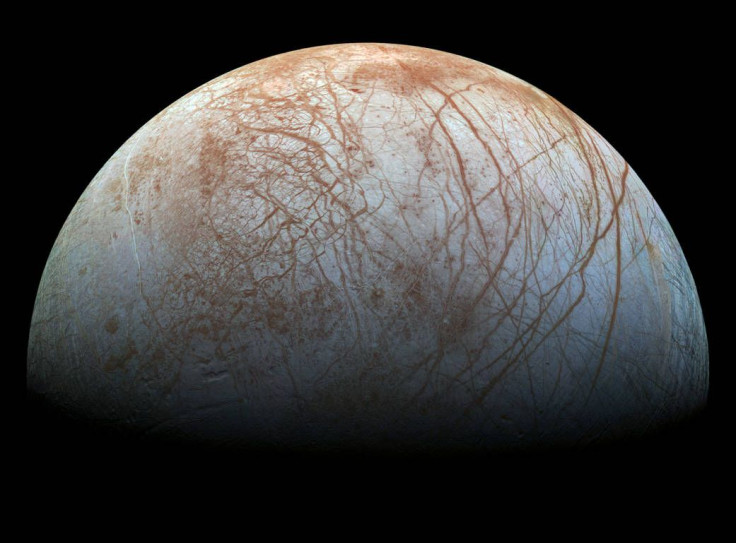Alien Life Found By NASA? Europa Photos From Hubble Telescope Show 'Surprising' Activity, Space Agency Says

NASA scientists plan to reveal next week some “surprising” new observed activity that some speculate may lead to the discovery of alien life in our solar system.
After analyzing photographs, the U.S. space agency is expected to release details Monday about the suspected subsurface ocean on Jupiter’s moon Europa. The 1,900-mile-wide satellite is suspected of having a huge ocean underneath an icy shell that some scientists believe could be one of the best shots at finding life in our solar system. The ocean also fascinates scientists because they believe it may be in contact with Europa’s rocky mantle — circumstances that could lead to all kinds of chemical reactions.
“Astronomers will present results from a unique Europa observing campaign that resulted in surprising evidence of activity that may be related to the presence of a subsurface ocean on Europa,” NASA wrote in a press release Tuesday announcing the media event.
Paul Hertz, director of the Astrophysics Division at NASA Headquarters in Washington, and Jennifer Wiseman, senior Hubble project scientist at NASA’s Goddard Space Flight Center, will present the findings.
The new photographs come from the Hubble Space Telescope, but NASA has plans in the work to send a mission to analyze Europa up close in the coming years. That mission will perform 45 flybys of the moon at varying altitudes from 16 miles above the surface to 1,700 miles above the surface. From that mission, they hope to be able to confirm that Europa actually has a subsurface ocean.
"The cycling of oxygen and hydrogen in Europa's ocean will be a major driver for Europa's ocean chemistry and any life there, just as it is on Earth," NASA planetary geophysicist Steve Vance said in a press release in May.
© Copyright IBTimes 2024. All rights reserved.












